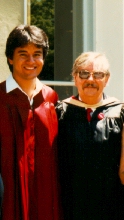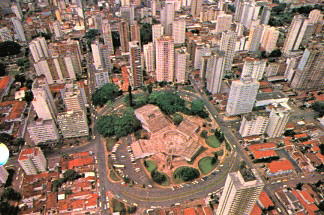|


Digital Services
| Top 10 Visited Pages |
|---|
| This component requires SharePoint or FrontPage Server Extensions, version 2002 or greater. |
| |
I
was born just a little
over 30
Years ago in the
beautiful city of Campinas,
São Paulo, Brazil.
I lived in Campinas until I was 18 years old when I decided to
go to school in the U.S.A. in 1983.
After devoting 6 years
studying Computer Science, Psychology, Computer Science in
Education and Educational Media at Western
Oregon State College
(now Western Oregon University) in Monmouth,
Oregon, I moved to Portland, Oregon in 1991 and I have been
here since, working as a Computer Science Information Systems/
Computer Applications System instructor
for Portland
Community College..
Some newspaper interviews
and other articles:
- Saint
Paul Pioneer Press INSIDE TECH (Talk), December 14th,
1998, Saint Paul Minnesota U.S.A.
- Western
Oregon University Alumni, (Brazilian alumnus in
Oregon connects worldwide), Winter 1998
- The
Oregonian LIVING (Fear is contagious, but some computer
viruses are just hoaxes), November 5th, 1997.
- The
Oregonian LIVING (The call of Net telephony), April
15th 97, Oregon U.S.A.
- O
Pergaminho (Internet: Formiga tem
"Homepage"criada nos Estados Unidos), June
6th, 1997, Formiga, Minas Gerais, Brazil
- LATCO,
January 1996
- Correio
popular INFORMÁTICA (Brasileiros matam a saudade pela
Internet), June 20th 1995, Campinas, Brazil
- Correio
popular FILATELIA (Literatura filatélica por jovem),
May 8th 1977, Campinas, Brazil
|
|
|
|

|
<
My great friend and mentor during these years, Baker.
|
CAMPINAS
HISTORIC FEATURES
|
PORTLAND
HISTORIC FEATURES
Some
webcams in Portland
How is the weather in Aloha, Oregon today?

|

After the trail of
the Goiases was opened from 1721 to 1730, between Jundiaí and Mogi
Mirim, it was settled a resting place for the caravans going and
coming from Goiás and Cuiabá. This place was know as "Campinas
do Mato Grosso" because "Campinas" means fields, and
there were three small fields in the middle of the thick jungle. In
1739, Barreto Leme, founded a rural village and the region of Campinas
started to grow. In 1772 the inhabitants of the village, claiming the
lack of religious assistance, which was only possible in Jundiaí
started a movement to get a license to build a Chapel.
On May 27th, 1774,
General Morgado Mateus, the Governor of the "Capitania de São
Paulo" gives to Barreto Leme the title of "founder,
administrator and director" of the urban nucleus to be founded.
At the same day, the captain general settled the measure of the
streets and blocks as well as the position of houses on them. This was
the first urban plan for Campinas.
Soon after, Priest Antonio de
Padua celebrated a mass on July l4th, 1774, thus inaugurating the
temporary chapel. This act marked the foundation of "Freguesia de
Nossa Senhora da Conceição".
From the second half of the XIX
century, the town begins to have a social-economic identity assured by
the development of sugar cane industries, known as "engenhos",
as well as the coffee plantations.
|

Portland, the largest city in
Oregon, is located in the northwestern part of the state. The city
straddles the Willamette River just above its confluence with the
Columbia.
The population of the city is
437,319 (1990 census). The greater metropolitan area (9,453 sq
km/3,650 sq mi.). The city enjoys a relatively mild climate.
Although Portland has some
important manufacturing establishments, notably those turning out wood
products and processed foods, its economy is primarily commercial. The
port is used by both barges carrying grain and ores downstream through
the Columbia Gorge and oceangoing vessels, which can navigate the
Columbia as far upstream as Portland.
Settled in the early 19th
century, the city was laid out in 1845 and named for Portland, Maine.
By 1860 it was the largest city in the Pacific Northwest, a
distinction it held until the turn of the century (when it was
surpassed by Seattle, Wash.)
|
|